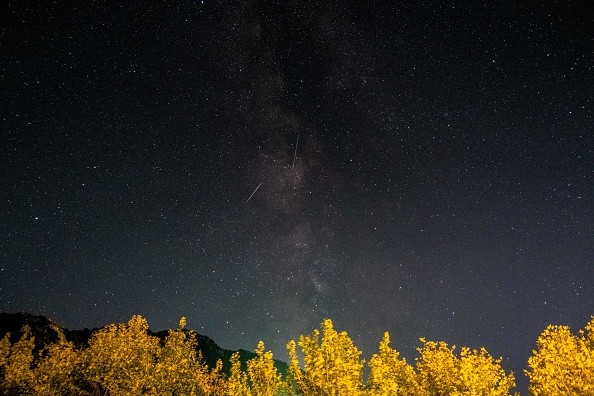Orionids will start a long period of fall meteor showers. It could also be called meteor shower season because there will be up to four unique shooting star occurrences in the night sky in the upcoming month.

Orionid Meteor Shower
A celestial sequence of four meteor showers that will climax in less than a month will begin before the end of the week, owing to one of the most well-known objects in the solar system.
The Orionid meteor shower reaches its climax when the Earth passes through a field of cometary debris during the night of Thursday, Oct. 20, into the early hours of Friday, Nov. 21. Even though the well-known comet won't enter the inner solar system again until 2061, its past circuits around the sun produced a trail of cosmic dust and debris that will explode spectacularly this week when it collides with Earth's atmosphere.
Although Halley's Comet is the reason for the meteor shower, Orion is the constellation, after which it is called because meteors will appear to come from the same region of the sky as the constellation.
Soon after sunset on Thursday, meteors may begin to flash across the sky, but they won't become frequent until well after 10 p.m. the radiant point rises with Orion in the southeast at local time.
When to Look Up
The ideal time to see the Orionids is between one and two in the morning. According to the American Meteor Society, local time and dawn (AMS). Up to 20 meteors per hour may be visible during this period from dark places.
The AMS advised lying in a comfy lounge chair with the back inclined so that you are gazing approximately halfway up in the sky to watch these meteors. If your sky is near the horizon is well lighted, you can stare straight up, although more meteors are visible in the lower half of the sky than straight up.
Since the Perseids peaked in the middle of August, the Orionids will be the first meteor shower to light up the night sky. The Perseid meteor shower usually ranks among the greatest of the year, but the most recent one peaked on the same night as a supermoon, which was brighter than many shooting stars.
Around 3 a.m., a crescent moon will appear. It will not be quite as disruptive as the supermoon that clashed with the Perseids, which will be at its peak local time on Friday during the Orionids.
Orionid viewers may experience some difficulties this year, not because of the moon but because of Mother Nature.
Reaching its Peak
The Orionid meteor shower is expected to peak Thursday night throughout most of the continental United States, while light pollution from towns and highways may still make viewing conditions difficult.
Five to ten meteors per hour may not seem exciting to most skywatchers, but the meteor showers may be worth a look because they frequently contain several fireballs.
According to the AMS, the Northern Taurids appear to have a seven-year periodicity. In 2008 and 2015, fireballs were frequent with the Taurids; thus, this year could see the next outbreak of extraordinarily brilliant meteors.
Related Article : Why are Scientists Searching the Bottom of the Ocean for the Remnants of 2014 Meteor?
For more Space news, don't forget to follow Nature World News!
© 2025 NatureWorldNews.com All rights reserved. Do not reproduce without permission.





